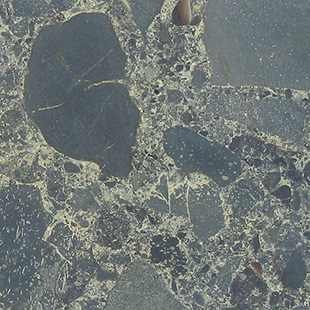












A breccia may have a variety of different origins, as indicated by the named types including sedimentary breccia, tectonic breccia, igneous breccia, impact breccia and hydrothermal breccia.
Ornamental uses - The striking visual appearance of breccias has for millennia made them a popular sculptural and architectural material. Breccia was used on a limited scale by the ancient Egyptians - one of the best-known examples is the statue of the goddess Tawaret in the British Museum).
It was regarded by the Romans as an especially precious stone and was often used in high-profile public buildings.
Many types of marble are brecciated, such as Breccia Oniciata or Breche Nouvelle.
It is most often used as an ornamental or facing material in walls and columns. A particularly striking example can be seen in the Pantheon in Rome, which features two gigantic columns of pavonazzetto, a breccia coming from Phrygia (in modern Turkey).
Pavonazzetto obtains its name from its extremely colourful appearance, which is reminiscent of a peacock's feathers (pavone is "peacock" in Italian).
By Appointment
DE FERRANTI
South Park Studios - Suite 10
88 Peterborough Road, London SW6 3HH
United Kingdom